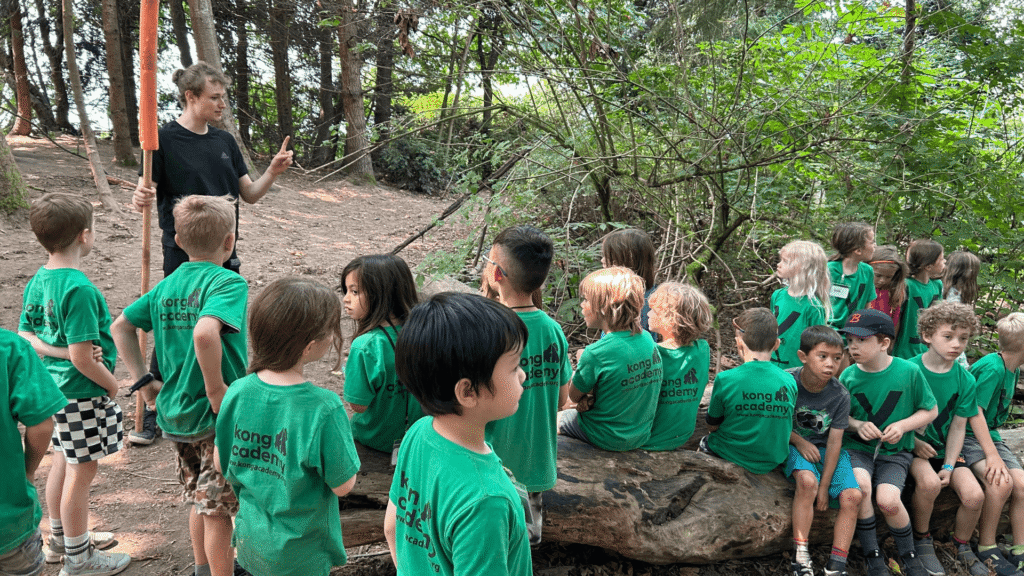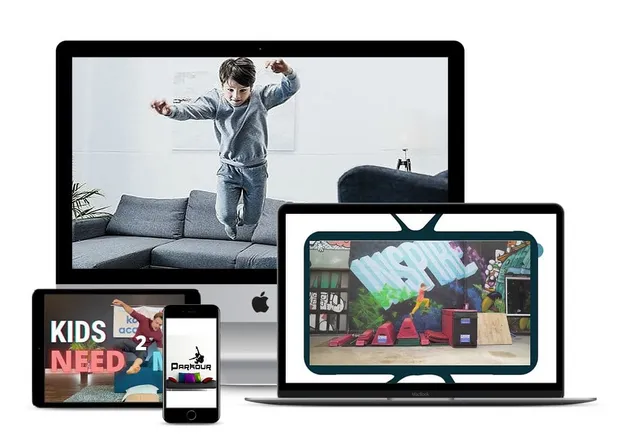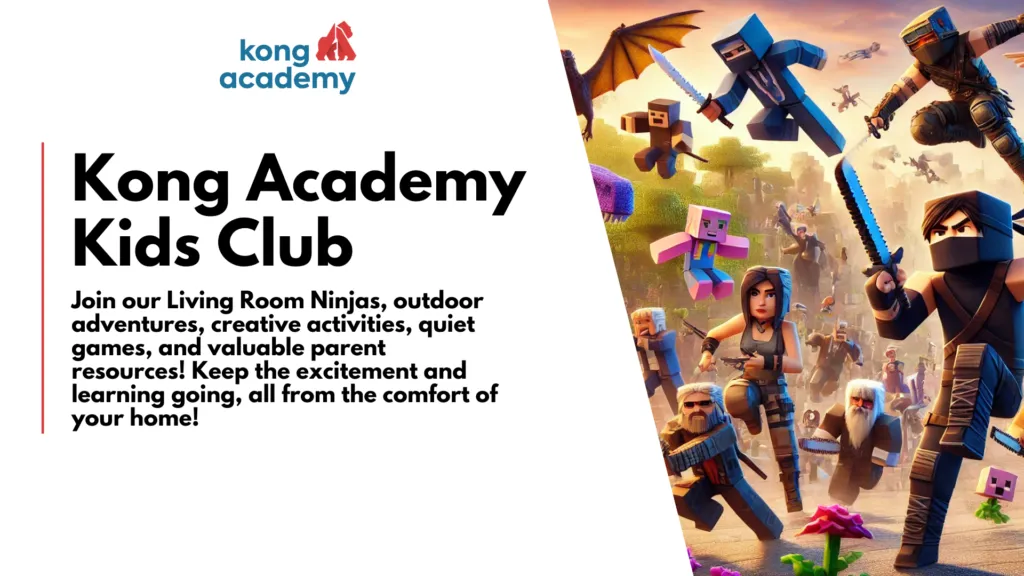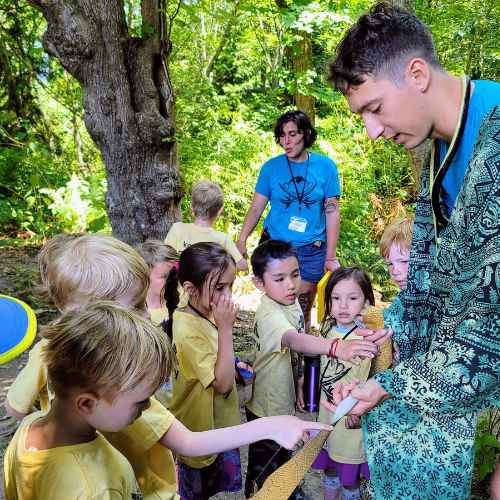
Ever try explaining “patience” to a 7-year-old in the middle of a meltdown because they have to wait a full 30 seconds for the iPad to load? Yeah, good luck with that.
Turns out, nature as a teacher may be the best thing we’ve got when it comes to patience—and kids need that kind of slow magic now more than ever. Especially because a lot of modern parenting is a game of instant everything—meals in minutes, on-demand shows, and answers from Alexa. But when it comes to helping kids build real-world life skills like emotional regulation and patience, there’s no shortcut.
That’s where nature steps in—no screens, no instant anything, just the original slow burn.
Patience, Grasshopper—Nature Doesn’t Rush & That’s The Point
Think about how long it takes a tree to grow. How a caterpillar has to hang out in goo before becoming a butterfly. Or how you can sit in a garden for 10 minutes and not a single flower blooms while you’re watching—yet come back next week, and boom, color explosion.
For kids, nature is the original slow TV. When kids hike, plant seeds, wait for bugs to crawl out, or build a stick fort that keeps collapsing… they’re learning to stay present, regulate frustration, and keep trying. That’s patience in slow motion.
This is exactly what happens in our summer camps, after-school programs, and YouTube videos—kids chase a challenge, fall down, try again, and stay curious. In our Summer Shark Escape Floor is Lava Game, they’ll race past sharks, hunt for treasure, and solve puzzles—all while getting a workout and stretching their focus, frustration tolerance, and teamwork muscles. Nature + play = patience in real-time.
What Nature Teaches Kids (Besides Just Patience)
Remember when summer meant scraped knees, climbing trees, and building forts out of nothing but sticks and wild ideas? That kind of unstructured, outdoor play shaped an entire generation’s creativity, confidence, and emotional resilience. But for many kids today, it’s not the norm.
Instead, childhood often happens indoors. Blame the screens. Blame the packed schedules. Blame the fact that fewer kids roam the neighborhood freely. But even though the world has changed, kids still crave outdoor adventure. Their brains and bodies still need it.
Nature is a full-on, research-backed learning environment. Sunshine boosts vitamin D and mood. Fresh air resets energy. And movement—especially unstructured, exploratory movement—helps kids regulate emotions, solve problems, and build social skills.
At Kong Academy, we’ve seen this play out firsthand. That’s why our camps are rooted in movement, curiosity, and outdoor exploration. We don’t just bring kids to a park and “let them play outside”—we guide them through adventures that help them grow.
Nature teaches:
- Self-regulation: If you can’t control the weather, we teach kids to adapt.
- Curiosity: Bugs, mud, clouds—there’s always something to wonder about.
- Problem-solving: When the trail is blocked, we will figure it out.
- Resilience: If the rain comes and there are wet socks. We don’t make it a big deal, we teach kids to keep going.
All of these are part of the SEL (Social Emotional Learning) toolkit we embed into all our programs. Just like with Crocodile Jungle Brain Break; it’s a full-body workout, animal adventure, and SEL lesson all rolled into one. As kids dodge crocodiles, meet jungle creatures, and move their bodies, they’re also practicing impulse control, patience, and resilience without even realizing it.
When kids explore outdoors—especially with friends—they’re building emotional and social muscles that screens—even the best ones (yep, including ours)—just can’t replicate. Nature teaches through experience, and that lived-in learning sticks in a way videos alone never can.
Why Kids Need To Experience Patience, Not Just Hear About It
Patience isn’t just a virtue—it’s a foundational skill that helps kids navigate frustration, delay gratification, and build better relationships over time. Unfortunately, you can’t tell a kid to “be patient” and expect it to stick.
But when they:
- Build a bug trap and wait…
- Try to catch a frog that keeps jumping away…
- Plant something and check on it every day…
they start to feel what waiting-with-purpose feels like. They build the tolerance for frustration. They get the reward of sticking with something.
That’s what we call real learning. And it’s why nature is such a powerful (and underused) teacher.
Nature Teaches Kids Patience In Ways We Can’t Script Or Speed Up.
Every slow-growing plant, delayed result, or unexpected detour is an opportunity for them to flex emotional regulation and experience what real patience feels like in their bodies. This is why using nature as a teacher works so well—it gives kids space to struggle and self-correct, without shame.
In nature, kids also learn they’re not in control of everything. You can’t make the clouds move faster or rush a butterfly out of its cocoon. You can’t rush the sunset. You can’t make a squirrel come closer. You can’t force a tree to bloom just because you’re ready to see flowers. That feeling—of letting go and adapting—is significant. And for kids used to instant everything, it’s a total nervous system reset.
These moments of waiting, watching, and wondering build executive function—without a single worksheet. Nature trains focus, self-control, and persistence, all the things we try to teach in the classroom but that stick better when learned through movement and adventure.
This gentle “lesson in letting go” helps kids loosen their grip on control, which is often at the root of impatience. We let kids experience the discomfort of things taking time within the safety and structure of games. Whether it’s watching for the right moment to act or building something together as a team, they learn that good things actually do come to those who wait.
Patience Builds Executive Function (Without A Lecture)
Waiting in line might feel like a waste of time—but neurologically, it’s anything but. When kids have to wait, pause, or try again, they’re actually strengthening their executive function—the brain’s control center for planning, focus, memory, and impulse control.
At Kong Academy, we don’t have kids sit still to learn patience. We give them games that require patience in order to succeed. When they’re solving a movement puzzle, building a team strategy, or navigating a challenge together, their brains are working just as hard as their bodies.
Nature Rewards Observation & Stillness
One of the coolest things about nature as a teacher is that sometimes, nature rewards the still and the quiet, it doesn’t always reward the fastest kid or the loudest voice. Sometimes, the kid who sees the hidden snail, who notices the first crack in a seed pod, who spots a shy animal or notices the tiniest flower sprouting from the dirt? That kid learns that slowing down is actually a superpower.
This flips the usual dynamic on its head. And for kids who are used to instant feedback, it’s an important shift. Stillness becomes valuable. Slowing down becomes exciting. And over time, that appreciation for small moments becomes a practice, not just a coincidence.
At Kong Academy, we build this kind of learning into our afterschool and summer camp experiences. Through obstacle courses, imaginary adventures, and teamwork games, your child will build patience, not because we told them to, but because they practiced it without even realizing it.
Ready to get your kids moving, exploring, and learning the kind of skills no screen can teach?
Join us this summer at Kong Academy—where nature, movement, and fun turn everyday play into lifelong lessons.
GET Access to the ULTIMATE PLAY DATE PACKAGE (Value: $49) for FREE!


7-Day Crystal Shard Adventure
Unleash your child’s potential with our 7-day crystal shard movement adventure!




